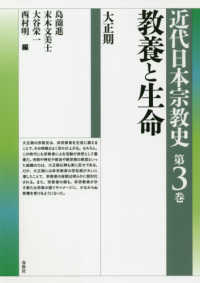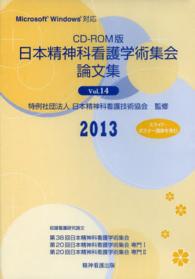- ホーム
- > 洋書
- > 英文書
- > Science / Mathematics
Full Description
One of the major philosophical problems in physical sciences is what criteria should determine how scientific theories are selected and justified in practice and whether, in describing observable physical phenomena, such theories are effectively constrained to be unique. This book studies the example of a particular theory, the S-matrix theory. The S-matrix program was initiated by Heisenberg to deal with difficulties encountered in quantum field theories in describing particular phenomena. Since then, each theory has at different times been favoured as the explanation of observed phenomena. Certainly the S-matrix theory was adequate, feasible and fertile. However, the quantum field theory interpretation is now widely accepted and the study of alternative theories is all but abandoned. By examining the philosophy which influenced the turns in this story, the author explains how an adequate and viable theory fell out of favour and concludes with a critique of different methodologies in the history of science. This book will be of value to both philosophers of science and physicists interested in the philosophical background to their field.
Contents
Preface; 1. Introduction and background; 2. Origin of the S-matrix: Heisenberg's program and a background to dispersion theory; 3. Dispersion relations; 4. Another route to a theory based on analytic reaction amplitudes; 5. The analytic S-matrix; 6. The bootstrap and Regge poles; 7. An autonomous S-matrix program; 8. The duality program; 9. 'Data' for a methodological study; 10. Methodological lessons; Appendix; Notes; References; Glossary of technical terms (from physics and from philosophy); Some key figures and their positions; Index.








